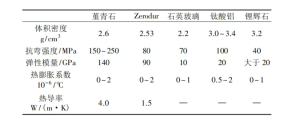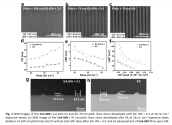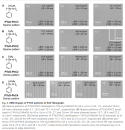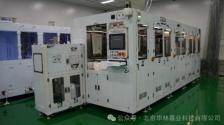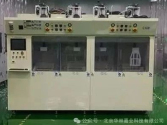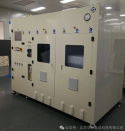Cordierite - a key material for the development of photolithography machines
In the field of precision manufacturing in modern industry, cordierite has become a star material with its outstanding performance. Recently , Kyocera Corporation announced that its "precision cordierite" ceramic mirror has been selected for experimental equipment for optical communication between the International Space Station (ISS) and the mobile optical station on Earth. This high-performance ceramic not only has an extremely low thermal expansion coefficient, but also has excellent thermal shock resistance, good high-temperature stability and outstanding oxidation resistance. These characteristics make cordierite shine in many fields such as metallurgy, automobiles, catalysts, environmental protection, electronic packaging and infrared emission, especially in the field of semiconductor equipment manufacturing, showing great application potential, and is an ideal material for photolithography square mirrors, etc.
On the ultra-precision worktable of the lithography machine, the accuracy of the square mirror component is directly related to the resolution and production efficiency of the lithography machine. Its thermal expansion coefficient must be close to zero ( ≦2×10⁻⁸ K ⁻ ¹ ) to ensure that it can maintain extremely high positioning accuracy under temperature fluctuations. In addition, it must have high bending strength ( >190 MPa ) and high elastic modulus ( >140 GPa ), while maintaining low density to meet the needs of high-speed platform movement. Therefore, cordierite ceramics have become an ideal material for manufacturing square mirror components due to its extremely small expansion coefficient and excellent mechanical properties.
The chemical formula of cordierite is Mg₂Al₄Si₅O₁₈, which is the key ternary oxide in the MgO-SiO₂-Al₂O₃ system. Its theoretical density is about 2.6g·cm⁻³, and its melting point is about 1460℃. It has excellent properties such as good chemical stability, high resistivity (>10¹²Ω·cm), low dielectric constant (εr=6), and near-zero frequency temperature coefficient (τf=-32x10⁻⁶℃⁻¹). Its crystals have three structures, namely high-temperature stable phase α cordierite, low-temperature stable phase β cordierite, and low-temperature metastable μ cordierite. When the ambient temperature changes, the bond lengths of Al-O and Si-O remain almost unchanged, while the bond length of Mg-O increases significantly, providing more space for volume expansion. Therefore, cordierite exhibits a smaller thermal expansion coefficient in the C-axis direction, as low as 1.5x10⁻⁶K⁻¹~2x10⁻⁶K⁻¹ (25℃~800℃), maintaining extremely strong dimensional stability under temperature fluctuations, meeting the requirements of high-quality low thermal expansion materials.
Making cordierite powder into square mirror components is a complex process involving multiple steps. First, it is necessary to prepare high-purity, fine-particle-size, precisely proportioned, and evenly distributed cordierite powder, which is essential for sintering uniform and dense cordierite ceramics. Next, the powder will undergo a molding process to form the initial shape of the square mirror, such as dry pressing, isostatic pressing, or injection molding. By precisely controlling the pressure and mold design, a molded component with precise dimensions and regular shape can be obtained. The component is then sintered at high temperature to achieve densification and crystal phase transformation. The temperature, atmosphere, and time during the process are strictly controlled to ensure that the physical properties and microstructure of the product meet the requirements. Finally, the sintered square mirror components need to undergo precision machining and polishing to meet the requirements of surface roughness and geometric accuracy, so as to achieve the resolution and production efficiency required by the lithography machine.
In order to obtain ideal cordierite powder, existing methods include: solid phase sintering method, sol-gel method, molten glass method , etc. For example, the solid phase sintering method uses MgO, SiO2 , Al2O3 powders to mix by mechanical grinding in a ball mill or sand mill, but it is difficult to meet the material requirements of photolithography devices in terms of high purity maintenance, particle size control and multi-element mixing effect. The sol-gel method can prepare powders with fine particle size and uniform distribution, but the process is complicated and the production efficiency is low, which is not suitable for large-scale industrial production. The material obtained by the molten glass method has good homogenization effect and high purity, but the huge energy consumption leads to high production cost.
